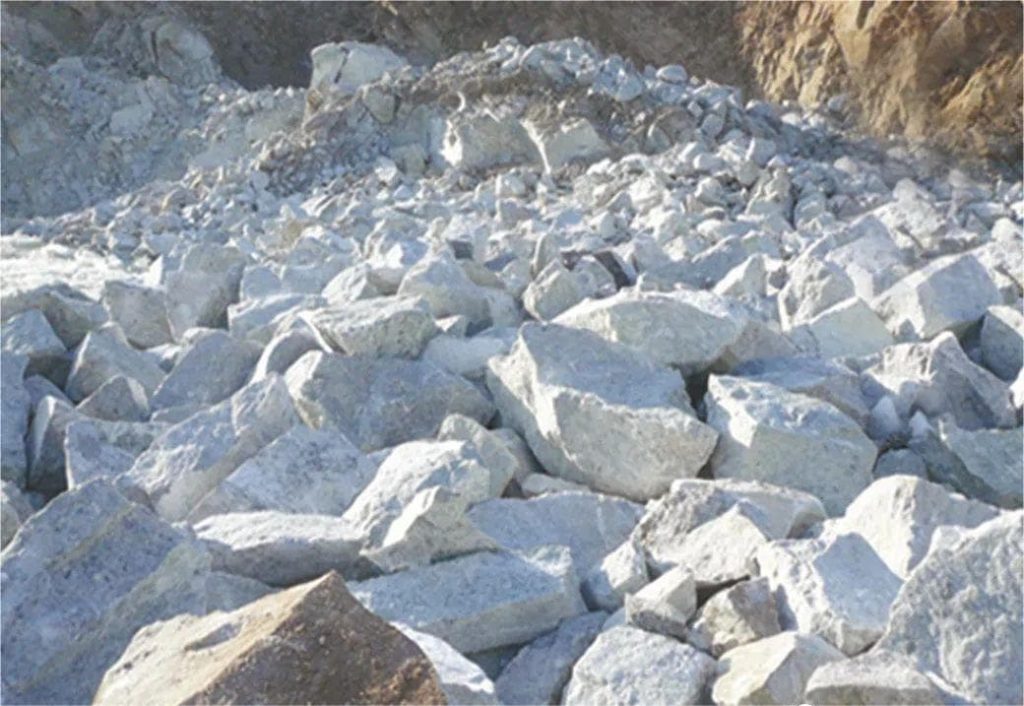Barite Mineral Types & Beneficiation Process Plant

1. Hand Separation
The choice of barite beneficiation method is affected by the type of ore, the nature of the original ore, the scale of the mine, and the use. Generally, residual ore is easy to select, so gravity separation method is preferred; sedimentary ore and hydrothermal ore associated with sulfide ore, fluorite, etc., in addition to gravity separation, flotation method is also used; barite flotation Commonly used anionic collectors: fatty acid salts, petroleum sulfonates or sulfates, etc.
Hand-selected: The color and density of barite and associated minerals are different, and massive barite is selected.
After the raw ore is mined, simple manual hand selection is a commonly used beneficiation method for many villagers to mine small mines. Some mines, due to their high geological grade and stable quality, can meet the export requirements of foreign trade after hand selection. For example, in Pancun Mine, Xiangzhou, Guangxi, the rich lump ore is selected by hand selection method. The hand-selecting method is simple and easy to implement, without any equipment, but the productivity is low and the resource waste is large.
2. Gravity separation
According to the density difference between barite and associated minerals, processes such as washing, desliming, screening, jigging, and shaking table are mostly used for residual ores.
The raw ore is washed, screened, crushed, graded and deslimed, and the concentrate of better quality can be obtained through the jig beneficiation process, and the product grade can reach more than 88%. The concentrate of Hengnan barite ore after gravity beneficiation can reach 92%. Local people wash the ore with the soil method, and each person can get 100kg of concentrate per day. The jaw crusher or impact crusher is generally used for crushing, and the roller crusher is generally used for fine crushing. The particle size of barite inlaid cloth is larger than 2mm, which can usually be sorted by heavy medium and jig. The maximum particle size of heavy media separation is 50mm, and the maximum particle size of wet and dry jigging is about 20mm. The particle size of the embedded cloth is less than 2mm, which can be sorted by a shaking table or a spiral classifier. Before the selection, the mud should be removed with a hydrocyclone to improve the selection effect.
The difference in surface physical and chemical properties between barite and associated minerals, commonly used in sedimentary barite ore and hydrothermal barite ore associated with sulfide ore, fluorite, etc. Flotation is an important way to deal with refractory barite resources such as low-grade ores, associated ores and tailings, and the process has good adaptability to various types of barite ores with complex inlays. It is also an effective way to recover fine-grained barite.
4. Magnetic Separation
According to the magnetic difference between barite and iron oxide minerals, it is mainly used to remove impurities of iron oxide minerals. When there is a significant difference in the magnetic properties of the minerals, the magnetic separation process can be used for separation. Barite is a non-magnetic mineral. When magnetic minerals (such as iron oxides) are the main gangue minerals, a magnetic separation process can be used to separate barite and gangue minerals. The resulting concentrate has a high BaSO4 content, which can be used as a requirement. Barite raw material for barium-based pharmaceuticals with very low iron content. Magnetic separation is often used to select pyrrhotite, magnetite, limonite and hematite.

